Đây là tư thế đã giúp nhiều người thoát khỏi "bàn tay thần chết" trong những tai nạn thảm khốc. Vì vậy, kĩ năng sinh tồn là chuyện đừng bao giờ nên chủ quan hay đổ thừa số phận<!>
“Nằm co người, ôm tay vào gối”, câu nói và hành động trong tích tắc của anh Nguyễn Bảo Sơn đã cứu được bản thân và gia đình trong vụ tai nạn xe khách lao xuống vực ở Lào Cai. Anh Sơn và gia đình là những người may mắn sống sót trong tai nạn làm 12 người chết. Anh cho biết, đây là lần đầu tiên hai vợ chồng cùng mẹ vợ và em vợ đến du lịch Sa Pa. Khi xe mất kiểm soát, vừa nghe phía đầu xe có tiếng hô mất thắng, với kinh nghiệm cầm lái, anh Sơn chỉ kịp hét lớn: “Nằm co người, ôm tay vào gối”. Câu nói và hành động theo bản năng sinh tồn ấy đã giúp vợ chồng anh giữ được tính mạng.
Trên chuyến bay của LAMIA Bolivia, số hiệu CP-2933 gặp nạn ngày 28/11 gần thành phố Medellin, miền trung Colombia, chỉ có 6 người sống sót. Trong số ấy có Erwin Tumiri - một thành viên phi hành đoàn. Dailymail cho biết "Erwin đã thoát khỏi tử thần nhờ tư thế bào thai". Cụ thể, Erwin đã ngồi tại chỗ, đặt những chiếc balo giữa hai chân mình rồi sau đó ngồi xuống bó gối, theo tư thế giống như những bào thai trong bụng mẹ, đầu cúi gập xuống. Tư thế này sẽ giúp giảm thiểu tối đa tác động xung lực cũng như chấn thương đối với phần ngực, bụng (nơi có những cơ quan nội tạng quan trọng).
Vậy tư thế bào thai là như thế nào và ứng dụng ra sao?
Tư thế bào thai - kĩ năng sống sót trong mọi tai nạn
Theo các chuyên gia, nguyên tắc đầu tiên và quan trọng nhất để hạn chế thương vong cho hành khách dù bạn di chuyển bằng phương tiện nào - máy bay, ô tô khách... đó là ngay lập tức cuộn mình trong tư thế bào thai.
Cụ thể, bạn nên gắn chặt mình vào ghế, ở tư thế cuộn tròn, áp ngực vào đùi giống như bào thai trong bụng mẹ. Phần đầu của bạn cúi đầu càng thấp càng tốt, dùng tay ôm đầu để tạo thành "một khối chặt". Tư thế này được cho là sẽ giảm thiểu lực tối đa tác động, xung lực cũng như chấn thương đối với phần ngực, bụng - nơi có những cơ quan nội tạng quan trọng. Nếu có thể, bạn hãy dùng những vật dụng mềm có sẵn trên xe như chăn, gối, quần áo để quấn quanh vùng cổ và đầu. Như thế, khi xảy ra va chạm, khả năng sống sót rất cao.
Để sống sót trong những trường hợp tai nạn nghiêm trọng phụ thuộc vào nhiều yếu tố may mắn. Song việc chuẩn bị tâm lí trước, không chủ quan, đồng thời trang bị những kĩ năng sinh tồn trong tình huống khẩn cấp cũng giúp hạn chế phần nào thương vong.
- Đối với xe ô tô, xe khách:
Khi đi xe, cần lựa chọn loại phương tiện chất lượng và luôn thắt dây an toàn dù là xe ghế ngồi hay giường nằm. Không nên để vật dụng nặng hay thủy tinh, vật nhọn ở xung quanh bởi chúng có thể là nguyên nhân gây ra chấn thương nghiêm trọng khi phanh gấp hoặc va chạm.
Người ngồi trên ghế ôtô cần phải có tư thế phù hợp, không nên ngả ghế về phía sau quá nhiều. Trong trường hợp khẩn cấp nghe thông báo xe bị mất kiểm soát, hãy chọn vị trí tránh xa thanh chắn và các vật cứng có thể gây tổn thương nếu bị va đập. Như thế sẽ giúp tránh được những chấn thương không đáng có. Đối với ghế tài xế, nên trang bị gối tựa đầu được đặt đúng vị trí giữa đỉnh tai và đỉnh đầu sẽ giúp hạn chế tổn thương ở vùng cổ, vai, gáy.
- Đối với máy bay:
Theo các chuyên gia hàng không cho biết, bạn sẽ có khả năng sống sót cao hơn nhiều nếu như bạn ghi nhớ lối đi của cửa thoát hiểm, vị trí để những đồ cứu hộ như áo phao cứu sinh, mặt nạ dưỡng khí…
Khi áp suất trong máy bay bị giảm, mặt nạ dưỡng khí sẽ tự động rơi xuống từ trần khoang khách và trong phòng vệ sinh. Bạn giữ nguyên vị trí của mình, kéo và giật mạnh mặt nạ gần nhất để có dưỡng khí. Đặt mặt nạ lên mũi và miệng thở bình thường, choàng dây qua đầu và xiết chặt dây giữ mặt nạ. Đeo mặt nạ cho mình trước sau đó trợ giúp trẻ em hoặc khách đi cùng.
Cuối cùng, hãy lắng nghe chỉ dẫn của các tiếp viên hàng không và tiến tới cửa thoát hiểm một cách nhanh nhất, đồng thời thoát ra ngoài máy bay với thời gian ít nhất có thể.
Luôn luôn giữ bình tĩnh để xử lí tình huống
Khi tai nạn xảy ra, tâm trạng của bất cứ ai cũng đều rơi vào trạng thái hoảng loạn cùng cực, nhưng bạn buộc mình phải giữ bình tĩnh. Việc giữ bình tĩnh sẽ giúp bạn tỉnh táo tìm ra giải pháp xử lí tình huống, đưa ra quyết định ở các tình huống tiếp theo, lên kế hoạch thoát thân và đôi khi có thể giúp đỡ được những người bị nạn xung quanh.
Trong cuộc sống, bất trắc có thể xảy đến bất cứ lúc nào, vậy nên việc trang bị những kỹ năng sống là vô cùng cần thiết giúp chúng ta có thể an toàn trong những tình huống nguy hiểm. Hi vọng thông tin trên đây sẽ hữu ích cho bạn!
Brace! Brace! Brace! Emergency Landing Positions
John M
John writes about topics related to business, organizational behavior and consumer science. He holds a PhD in Psychology and a MBA.
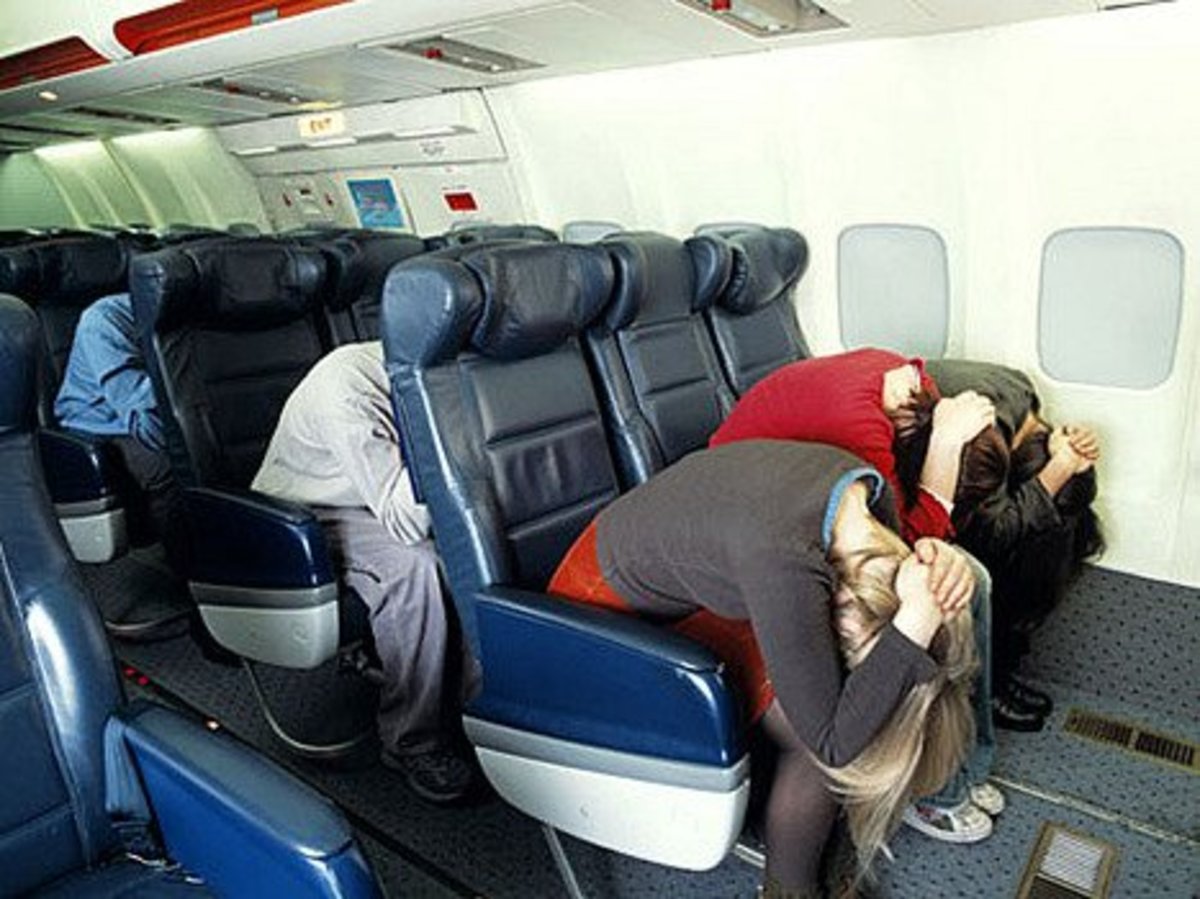
Brace Position | Source
Brace! Brace! Brace!
These are the words you never want to hear while flying on a commercial aircraft. Yet knowing what to do should you ever receive this command could very well save your life.
And so I have a serious question for you?
Do you know the brace position for emergency landings?
This article will explore the likely phraseology that you will likely hear during an emergency landing situation while on board a commercial aircraft.
Let me say here that the chances of you being involved in an air emergency are fairly remote.
And in case you were wondering, the odds of you dying in a plane crash are currently estimated to be around 11 million to one, according to published reports.
That statistic however only speaks to the chances of a fatality.
Taking part in an emergency landing, however, is completely different. According to the FAA, these types of incidents occur around 150 times per year.
Sure, the odds suggest it will probably never happen to you but I am here to say that it could. Why do I say this?
Because it happened to me.
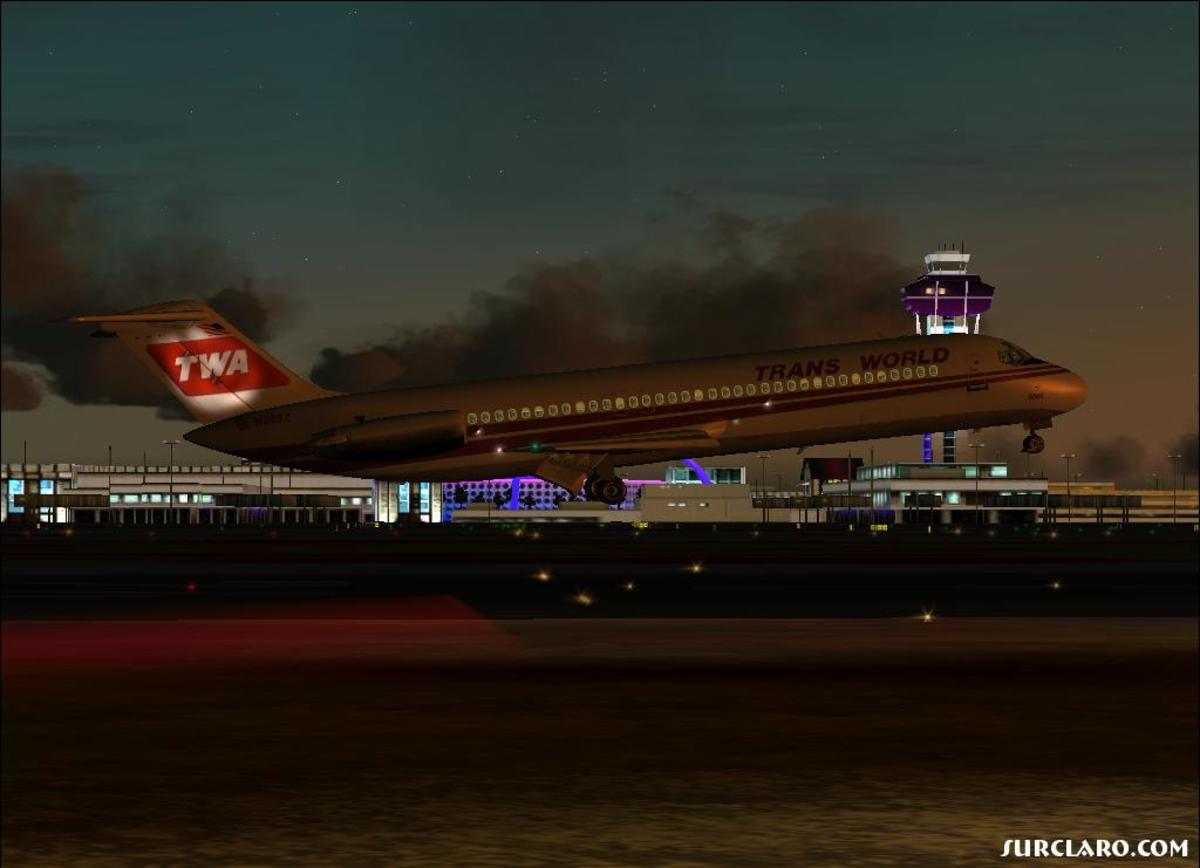
Takeoff DC9 | Source

Night Flight Airplane View | Source
Emergency Landing
In the early 1990’s, I was on a DC-9 passenger jet flying from Chicago to St. Louis (ORD – STL) with my final destination being Los Angeles. A change of aircraft was to take place in St. Louis, where I was to transfer to a 727.
This was an evening flight in the autumn of that year.
I was seated in the midsection of the aircraft in an aisle seat in an emergency exit row. Next to me in the window seat was an airline pilot who was commuting down to St. Louis to work. Both of us were flying on what is commonly referred to as a “pass” in the industry (aka non-rev).
To give you a little more background, the DC-9 has a seating configuration of 2 seats on the left and three seats on the right in coach. First class has a seating configuration of 2 seats on each side.
Anyway …
The pilot and me had started chatting after we took off from Chicago and we were making a bunch of small talk - pretty much for nearly the entire flight down to St. Louis. The time went by so fast that before I knew it, we were beginning our decent into Lambert Field. It is a short flight that is 45 minutes to an hour usually.
The flight crew started to do their thing, meaning picking up garbage and walking the aisle. Before we knew it, the announcement was made to place our seats in the upright position and to make sure our tray tables were stowed away.
"Almost there", said the pilot sitting next to me as began to descend.We continued to chat and tell some jokes.
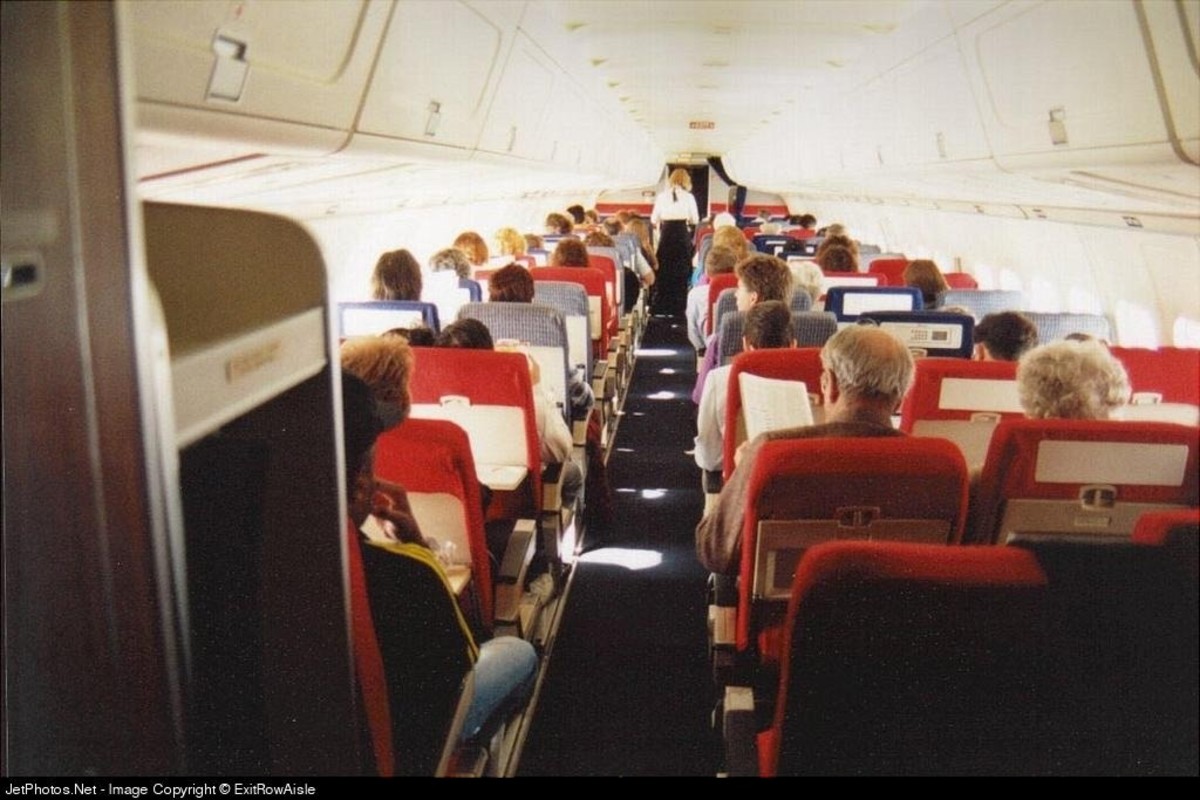
DC-9 Interior. 2 on left, 3 on right | Source
Underbelly of Aircraft
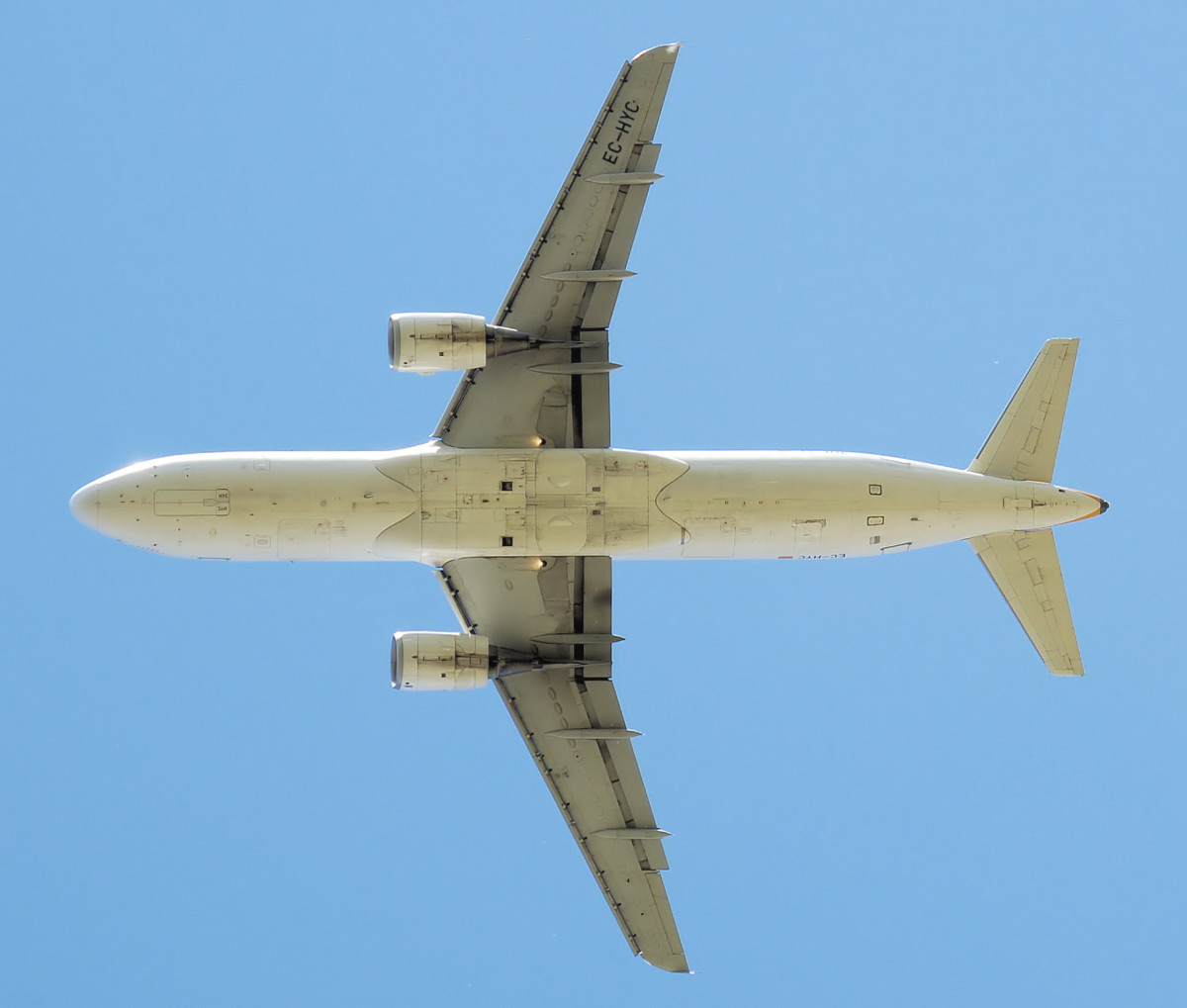
Underbelly of an Aircraft (This is an Airbus A320) | Source
Ker-Clunk! No Landing Gear
Once the flight crew had come through the cabin to make sure all of us were bucked in and the prepared for landing, the captain of our aircraft began to make his final approach to the airport. The engines began to rev up a bit, the way they normally do just before landing.
It was then we began to hear something freaky.
Ker-Clunk, Ker-Clunk, Ker-Clunk!
I knew the captain of our flight was trying to lower the landing hear and seemed to be having a tough time at it. The commuting pilot sitting next to me (a 727 pilot) leaned gently towards me and whispered in my ear, “These old DC-9s sometimes have problems with the wheel dropping from the wheel well”. He then gave me an reassuring wink. At that point, he didn't seem all that bothered.
A fight attendant did another walk-by, her face looking somewhat serious and her lips pressed tightly together. "Are you buckled in?", she said in a kind voice. She then walked away.
Once again, we heard the captain trying to lower the gear and there it was again ...
Ker-Clunk, Ker-Clunk, Ker-Clunk!
It still had not dropped. By this point, the aircraft was now completely silent, except the soft whistle of air passing over the fuselage and the distinctive whine of the DC-9’s twin turbines. There was no chit-chat and nobody was smiling. Everyone knew something was up. I can’t describe this kind of silence except to say it speaks to the deepest part of your soul.
We began to gain altitude, which I assume is because the captain of our flight decided to abandon our approach.
While I can’t be sure, I think were at about 12-15 thousand feet by the time he leveled off. That’s when we began to fly in a circular pattern. He made an announcement that essentially confirmed what all of us already knew – something was happening with the landing gear.
Brace Position
Ever had to assume brace position?
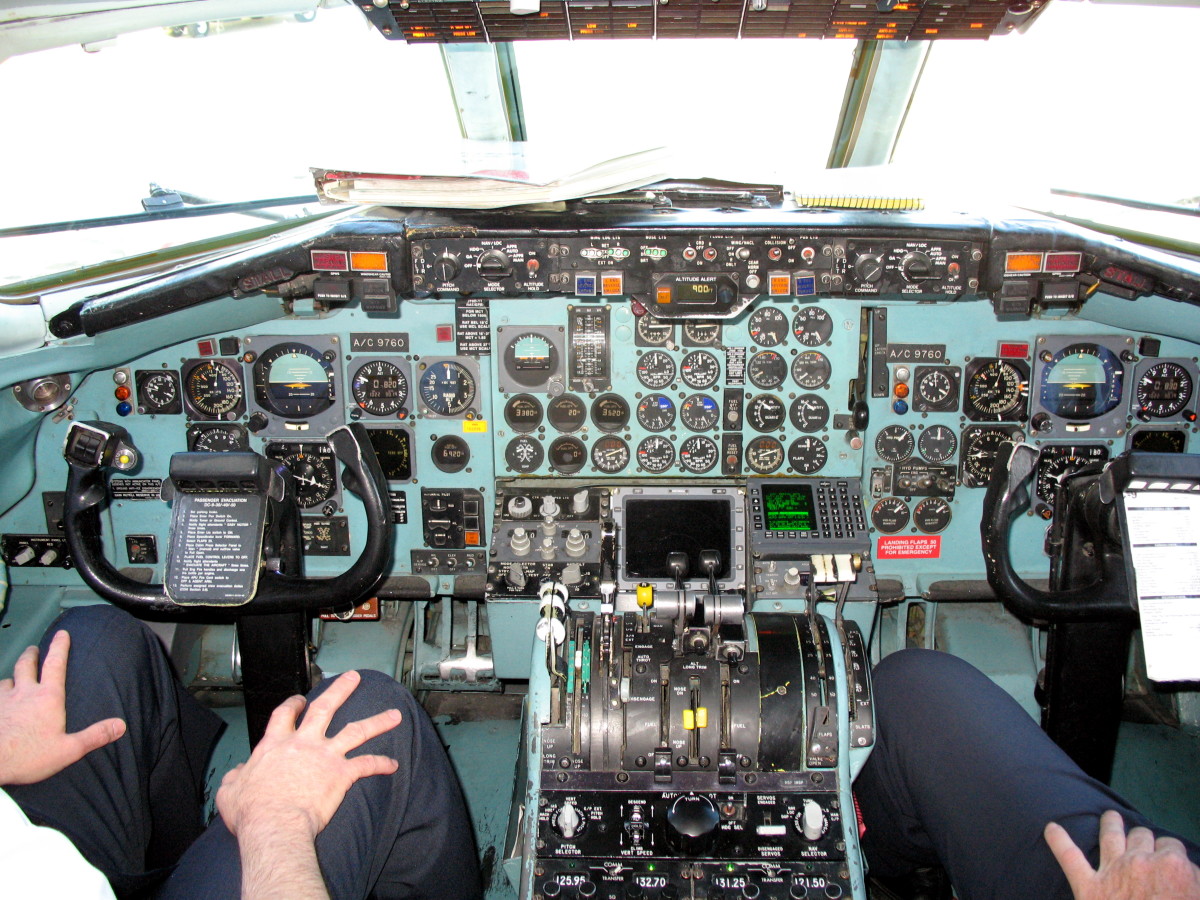
DC9 Flight Deck | Source
Wheels Dropped - Or Did They?
After what seemed like forever, the aircraft stopped doing the circle thing and began to gradually descend again.
Then suddenly, we heard the tell-tale sounds of the gear coming down:
Whoooosh! Plop!
Clapping immediately broke out from throughout the cabin. The relief, however, would be premature.
Our captain once again came on the PA and advised us in a very calm voice, “Ladies and gentleman, we think the landing gear is down but we want to make sure. We are going to do a quick flyby of the air tower for a visual inspection. Please standby for more information.”
After doing a fairly close pass by of the tower, the Captain came back onto the PA and said,
“Thanks folks. The tower has given us a visual on all of the landing gear but we are not sure about the nose gear. They see it but they are not sure if it is completely down. We are going to land anyway because of our fuel situation. The Flight Attendants will be giving you instructions. Everything is going to be fine. You will likely see emergency vehicles greeting our aircraft. Please do not be alarmed because this is standard protocol.”
I knew from working in the airline industry that we were then going into planned emergency mode. A red light went on close to the front galley, which I knew was an indication that the pilot wanted to talk to Flight Services Manager (FSM). I saw her pick up the phone, write some things down and hang up.
The pilot next to me then looked at me and said, "Son, get ready for some fun". He was half serious.
Planned vs. Unplanned Emergency
Before I continue sharing the rest of this story, it is important that you keep in mind that there are basically two types of emergencies in aviation.
The first is a planned emergency, like the one I am sharing with you here. In a planned emergency, the flight crew has time to “plan” for issues that may arise, like the one we were dealing with.
The second kind of emergency is unplanned, meaning that something suddenly happens that is unexpected, leaving little to no time to prepare. An example might be landing and skidding off the runway.
Planned vs. Unplanned Emergency
Planned
|
Unplanned
|
|---|---|
Crew has time to prepare passengers
|
Crew has no time to prepare passengers
|
Passengers have time to prepare
|
Passengers have no time to prepare
|
Airport personnel has no time to prepare
|
Airport personnel have no time to prepare
|
Brace Options
Option #1:
- Place feet flat on floor
- Heads down by lap
- Arms under knees
Option #2:
- Place feet on floor
- Cross writs and place on seat back in front
- Rest foreheads on crossed hands
Directions to Passengers
The FSM then got onto the PA and shared that we had approximately 10-15 minutes until our emergency landing. She went over all of the various exits in the aircraft. She then advised us to make sure all sharp objects were put away or in a sickness bag (i.e. keys, pens).
Brace instructions
We were then told to place feet flat on the floor, place our heads face down in lap and our arms under our knees.
If for whatever reasons we were unable to assume this position, we were told we could cross our wrists and place them on the seat back in front of us and rest our foreheads on our hands.
The flight attendant told us that once we get close to landing, the captain would announce over the PA the following:
Brace, Brace, Brace!
That would be our cue to assume the brace position and get ourselves ready for a potentially difficult landing.
Brace Brace Brace!
Brace Position
Video clip: https://www.youtube.com/watch? v=Ur5i6iQQ-ys
I want to be clear here and say that there many different ways to assume the brace position. Many countries have their own procedure, which is almost always dictated by that nation’s governmental aviation agency.
In the United States, the Federal Aviation Administration is charged with passenger safety and thus, the form and stance of the brace position on passenger aircraft.
As I mentioned before, we were told to assume one of two positions:
- Head down and hug your knees
- Cradle head on seat in front
I provided some illustrations so that you can see these examples. I have also posted a video of a real life emergency landing with similar commands being shouted out by the flight crew.
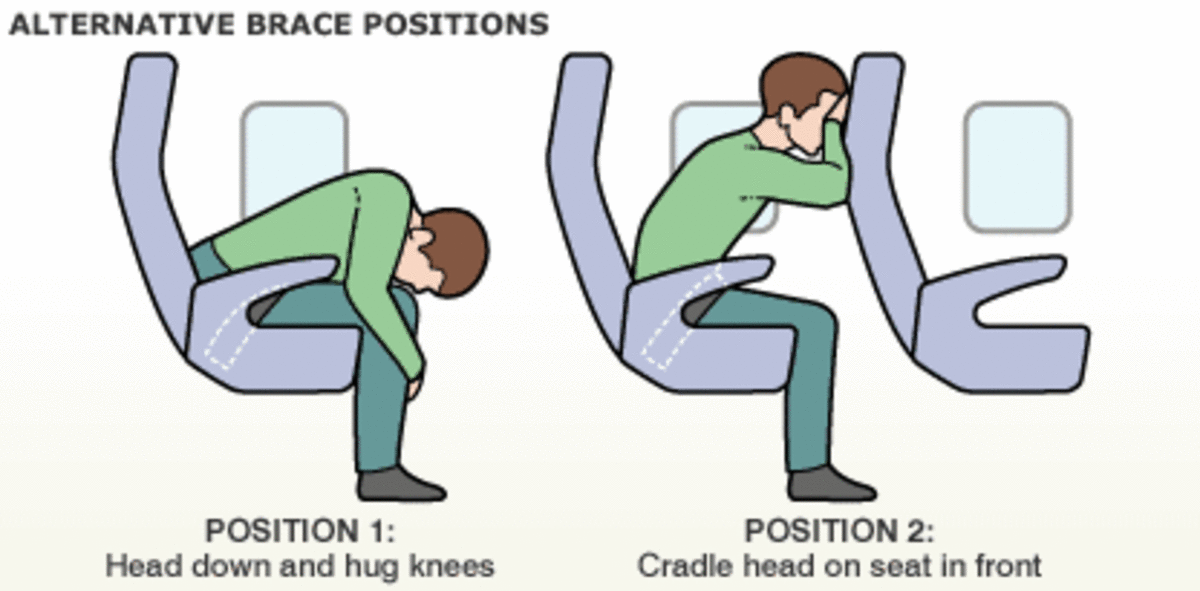
Brace Positions | Source
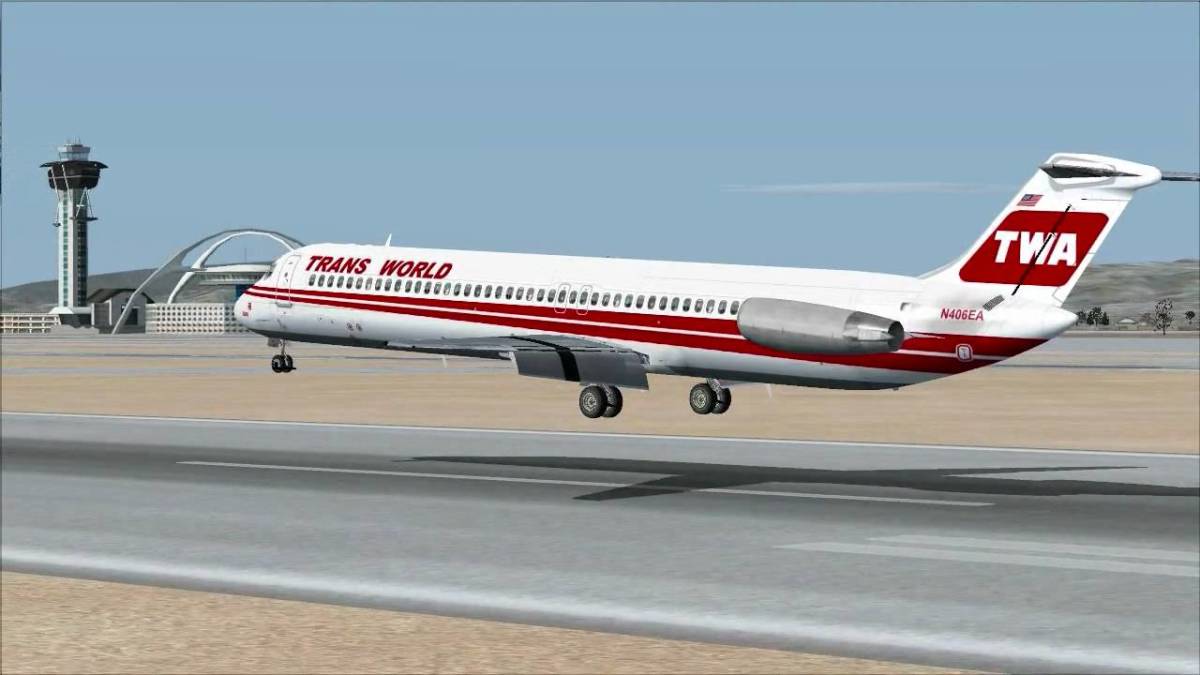
DC9 Landing | Source
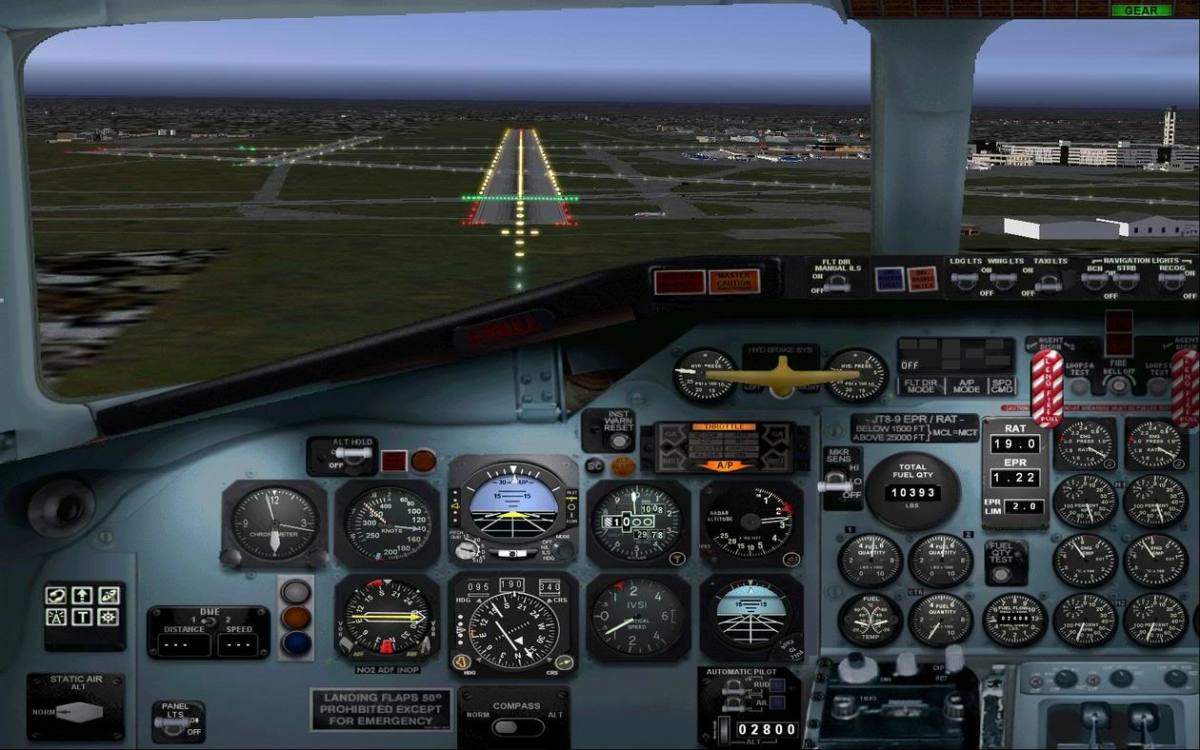
DC9 Landing Cockpit View | Source
Our Landing
About a minute before we touched down, the captain of the flight came on the PA system and in a very calm, monotone voice said firmly but loudly
Brace – Brace – Brace
The flight attendants then began to chant all at once:
Heads Down – Stay Down! Heads Down – Stay Down! Heads Down - Stay Down!
They continued this chant as we felt the back wheels touchdown on the runway. We held our breath waiting for the front wheel to touch down (the Captain came in very slowly and very deliberately).
Moments later, we felt the front wheel gently grab the tarmac. They flight attendants continued shouting the commands however until our aircraft came to a complete stop, just off the runway. We were then told we could all sit up.
When I looked out the window, I could see emergency vehicles all over the place. The pilot who was sitting next to me looked at me, grinned and said, “Now you have something to tell your buddies”.
I must admit that I chuckled, partly out of a sense of relieve and partly because the joke was kind of ridiculous.
They decided to bring air-stairs to our aircraft for us to deplane. I am not sure why but I suspect this was done out of an abundance of caution.
Somehow, I was able to make my next flight to California. The planned emergency apparently had backed up traffic at the airport, causing all flights to be delayed.
Emergency Landing Final Thoughts
I recognize that some might think what appears here to be “dramatic” or silly. I am here to say that knowing your brace position could truly save your life. I want to add that it really is important to listen to the flight crew when you get on a plane.
Read those safety information cards. Know where exits are located! The statistics show us that people who listen to the flight crew and follow directions stand a better chance of survival, should the unthinkable happen.
Above all, remember that the flight attendants on board your aircraft are not just there to serve you food and alcohol. Their primary mission is to keep you safe should something happen.
Finally, I am passing a long a link here that discusses why you should never travel with a child in your lap when flying. Obviously the choice is your but hopefully the information shared here will make you think about having a baby in your lap during an air emergency.
Thanks so much for stopping by.
Safe travels!
Không có nhận xét nào:
Đăng nhận xét